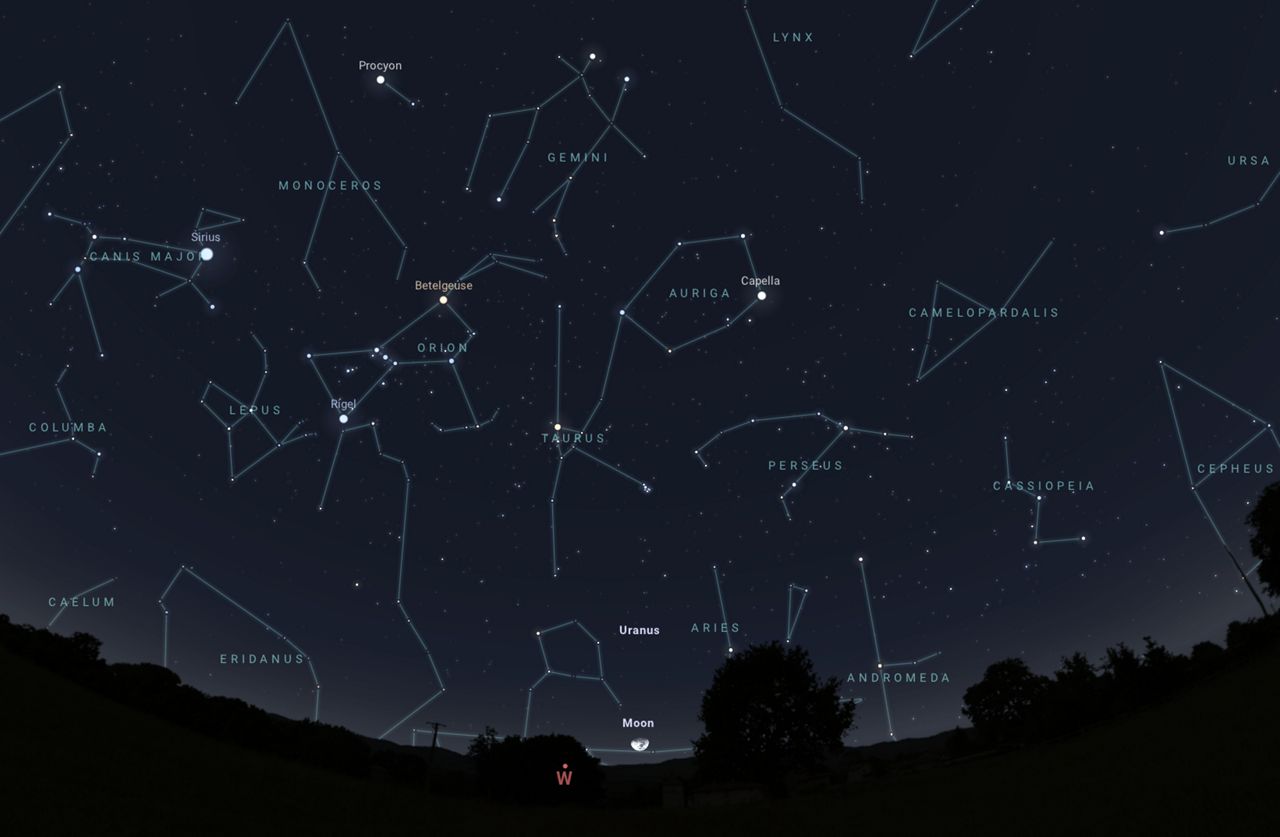The chilly, clear nights of December offer some good viewing of the nighttime skies.
What You Need To Know
- The Geminid meteor shower peaks the 13th into the 14th
- A full moon happens on the 18th
- Winter begins on the 21st
Let’s start with the annual Geminid meteor shower, which peaks the 13th into the 14th. At its peak, up to 150 meteors per hour are visible under ideal conditions.
Unfortunately, bright moonlight will wash out the sky until about 3 a.m. local time on Dec. 14. That’s when the moon sets, so put some hot chocolate on the stove and head out during the wee hours of the morning. Of course, pick an observing site well away from any light pollution and bundle up.
Check your forecast here to see if clouds will get in the way.
Simulated view looking west at about 4 a.m. on Dec. 14. The Gemini constellation is in the top center. (Stellarium)
The Moon is full on the night of the 18th. The December full moon is known as the Cold Moon, a fitting name as we approach the astronomical start of winter. Speaking of which, the winter solstice is Tuesday, Dec. 21 at 10:58 a.m. ET, when the sun is at its lowest point in the sky. That day has the fewest daylight hours–that’s right, the days start getting longer after that.
Venus is the unmistakable bright spot in the evening western sky, and by Friday the 17th, Comet C/2021, better known as Leonard, appears about five degrees below Venus and just above the horizon.
Depending on how much the comet has brightened, there’s a chance it may be just visible to the naked eye in the darkening sky. Begin looking below Venus just after sunset for a faint fuzzy feature. A good set of binoculars would be helpful.
Another meteor shower graces the December sky later this month. The Ursids happen Dec. 17-26, peaking on the 22nd or 23rd. But only 10 meteors per hour are expected at its peak, so it is nowhere near what we see with the Geminid and may not be worth standing out in the cold.

